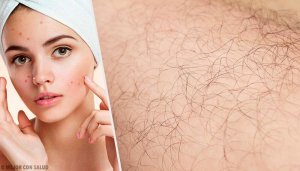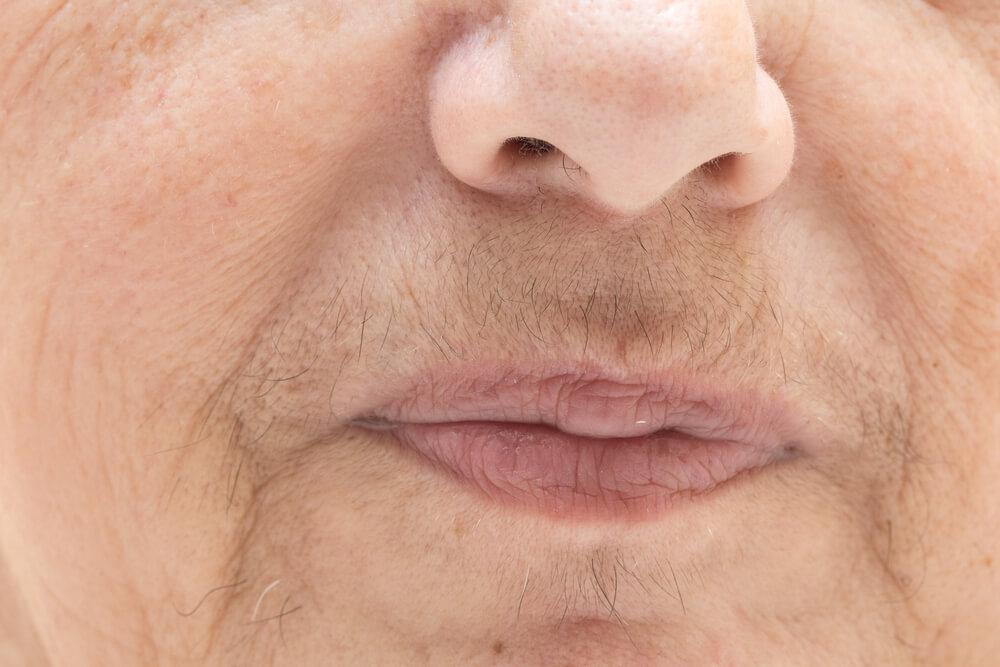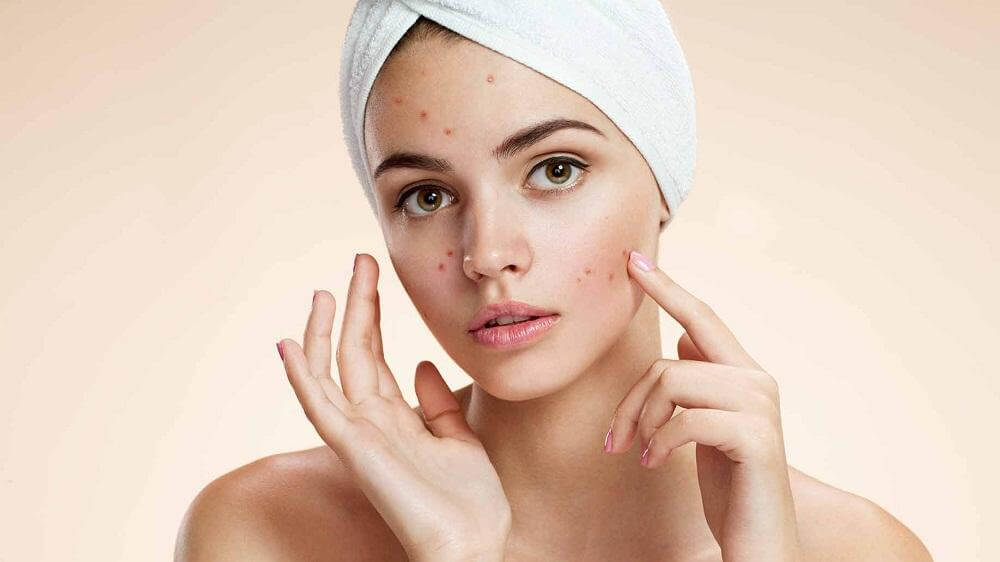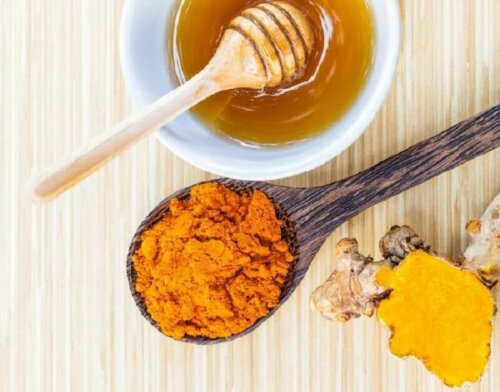Causes of Hirsutism and Natural Remedies to Treat It


Written and verified by the doctor José Gerardo Rosciano Paganelli
Hirsutism a condition that causes excessive hairiness in women. It affects areas influenced by male sex hormones or androgens in varying degrees of severity.
According to the experts of the Spanish Society of Pediatric Endocrinology, it grows in the following places: supralabial area, chin, cheeks, auricular pavilions, thorax (suprasternal area and mammary areolae), abdomen (linea alba), back, buttocks, and inner and anterior thighs.
In medical terms, hirsutism is a reflection of the local and circulating concentration of androgens and the sensitivity of the pilosebaceous unit to these androgens.
Types of body hair

- Vellus hair has no shaft. It’s short and light-colored.
- Terminal hair is hard, thick, and pigmented
In the case of hirsutism, terminal hair is the type of hair that appears in uncommon areas such as the:
- Face
- Areola
- Thighs
- Buttocks
- Chest
- Lower back
Can you fight hirsutism with hair removal?
Hirsutism causes excessive hair growth in androgen-dependent areas. So, what are androgens? Androgens are steroid hormones that have a masculinizing effect.
Androgens periodically produce testosterone, androsterone, and androstenedione. Thus, trying to beat hirsutism with hair removal won’t work.
Symptoms

In general, this condition has the following symptoms:
- Acne
- Hair loss
- Increased muscle mass
- In girls, it accelerates growth
- Seborrhea or excess oil in the hair
- Irregular menstrual periods, infertility
Read these Nine Symptoms of a Hormonal Imbalance that Affect Your Physical Appearance
Causes of hirsutism
In most cases, the causes of hirsutism are due to an overproduction of androgens. Hirsutism increases the production of ovarian hormones and adrenal glands.
Here are the most common causes:
- Polycystic ovary syndrome: This is an alteration in hormone production and metabolism
- Congenital adrenal hyperplasia: This is an inherited condition that unbalances the production of steroid hormones
- Pregnancy: In some cases, hormonal changes during pregnancy can trigger it
- Cushing’s syndrome: This causes an increase in cortisol production, which stimulates the appearance of body hair after a while.
- Medication: It’s important to control the use of corticosteroids, contraceptives, and anabolic steroids.
Natural remedies to treat hirsutism
Although there’s no scientific evidence that the following remedies are effective in treating hirsutism, there are those who choose to try them while maintaining a healthy lifestyle and following their doctor’s recommendations.
In case you also wish to do so, consult your doctor beforehand. Otherwise, the risk of adverse reactions is higher.
1. Spearmint and Green Tea
According to popular belief, drinking peppermint tea and green tea could help control the hormonal imbalance that causes hirsutism.

Ingredients
- Fresh mint
- Green tea leaves
- 1 tbsp. of honey
- 1 c. of water
Preparation
- First, heat the water until it boils
- Secondly, add the green tea leaves
- Then, add the mint leaves
- Then, let steep for 5 minutes
- Finally, sweeten with a spoonful of honey
Read these Six Recommendations to Prevent Ingrown Hairs
2. Citrus-based tonic
These are rich in antioxidants which are beneficial for the health of your whole body, but especially for your skin. For this reason, there are those who prepare the following tonic to take care of their skin and also reduce hirsutism.
Ingredients
- Zest of 1 lemon
- Zest of 1 orange
- Juice of 1 lemon
- 3 drops of mandarin essential oil
Preparation
- First, boil water and then, remove from heat
- Secondly, pour the water into a glass container
- Thirdly, add both zests
- Then, let the infusion sit overnight
- Remove the zests using a strainer and change the container
- Add the lemon juice and mandarin oil
- Apply evenly to the affected area with a cotton ball
- Finally, leave on for a few minutes and rinse with warm water and neutral soap
3. Turmeric and honey

Ayurvedic medicine indicates that this honey and turmeric remedy can help with several issues, including the removal of excess hair.
Ingredients
- 7 tbsp. of turmeric
- 3 tbsp. of honey
Preparation
- Firstly, pour the turmeric into a container
- Secondly, add the honey and mix until you form a paste
- Then, add a little water if the paste is too thick
- Finally, apply to the affected area
How to apply
- Firstly, wash and rinse the affected area
- Secondly, dry the area well
- Thirdly, apply evenly with circular massages
- Then, leave on for 15 minutes
- Finally, rinse off without leaving any residue
Recommendations
People say:
- First of all, avoid using razor blades in areas where hair grows recurrently because this will cause a line to form over time
- Remove hair with tweezers, since it pulls hair from the root and takes a while to grow back
- In addition, you can bleach hair to make it less visible
Treating hirsutism
Regarding the treatment of hirsutism, experts at MSD Manual clarify the following:
“If excessive hair growth isn’t related to an increase in male hormone levels, physical methods are used to remove the hair. If the cause is an increase in male hormone levels, hormone therapy is necessary in addition to physical methods.”
So, if you want to remove excess hair effectively, consult your dermatologist. The professional will tell you which is the most suitable method for you and the type of care you should take into account so you don’t mistreat your skin.
All cited sources were thoroughly reviewed by our team to ensure their quality, reliability, currency, and validity. The bibliography of this article was considered reliable and of academic or scientific accuracy.
- Effects of peppermint teas on plasma testosterone, follicle-stimulating hormone, and luteinizing hormone levels and testicular tissue in rats (2004). Akdogan M, Ozguner M, Kocak A, Oncu M, Cicek E.
https://www.ncbi.nlm.nih.gov/pubmed/15302514 - Spearmint herbal tea has significant anti-androgen effects in polycystic ovarian syndrome. A randomized controlled trial (2010). Grant P.
https://www.ncbi.nlm.nih.gov/pubmed/19585478 - Sadeghi Ataabadi, M., Alaee, S., Bagheri, M. J., & Bahmanpoor, S. (2017). Role of Essential Oil of Mentha Spicata (Spearmint) in Addressing Reverse Hormonal and Folliculogenesis Disturbances in a Polycystic Ovarian Syndrome in a Rat Model. Advanced pharmaceutical bulletin, 7(4), 651-654.
https://www.ncbi.nlm.nih.gov/pmc/articles/PMC5788221/
This text is provided for informational purposes only and does not replace consultation with a professional. If in doubt, consult your specialist.








